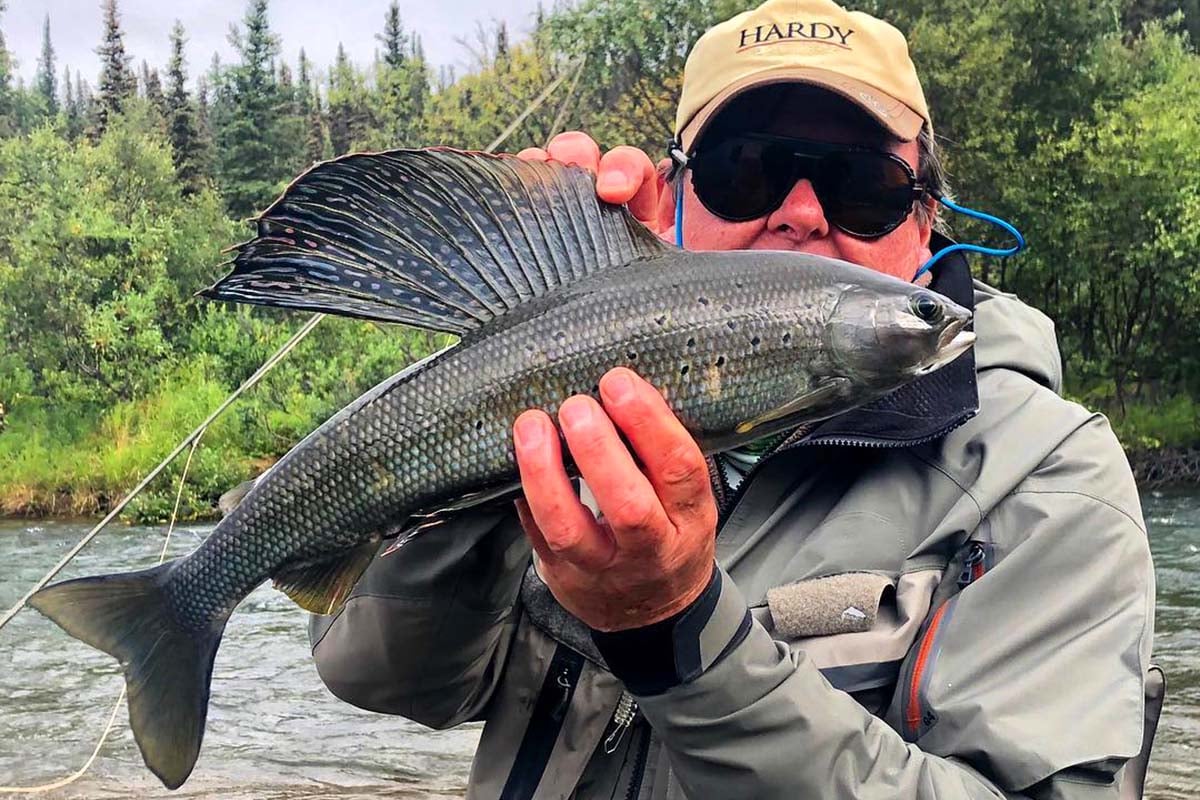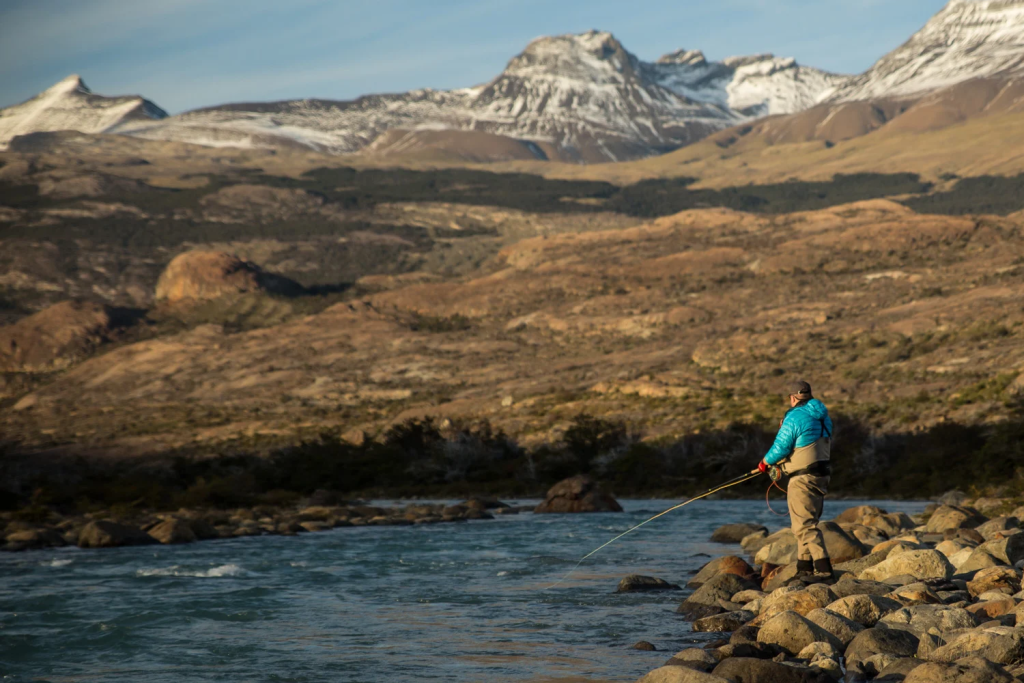Species: Grayling
Scientific Name: Thymallus thymallus
Also known as: The lady of the stream
Description
Grayling are a member of the Salmonidae family, and according to experts, there are 14 different species within this genus, including the Arctic Grayling, European Grayling, Baikal Black Grayling, Baikal White Grayling and the Mongolian Grayling, to name just a few. However, despite many different sub-species within the family, they all share the same characteristic looks.
They feature a small underslung mouth, large scales and a colourful streamlined body that can appear a dark purplish to bluish black or grey, grading to dark blue or silver grey on the flanks and grey or white on the belly. Small dark spots get often found on the fish’s sides, especially among juvenile fish. However, their most distinguishing feature is their showy, substantial sail-like dorsal fin, which features bands of green, orange, purple and red. This fin tends to be longer in males, highly colourful and used to court females during the spawning season. Their average life span is around 8 to 14 years, although some have lived for 18 years or more. They have a high metabolism and can grow quickly, with specimen-sized fish perhaps only five or six years old.
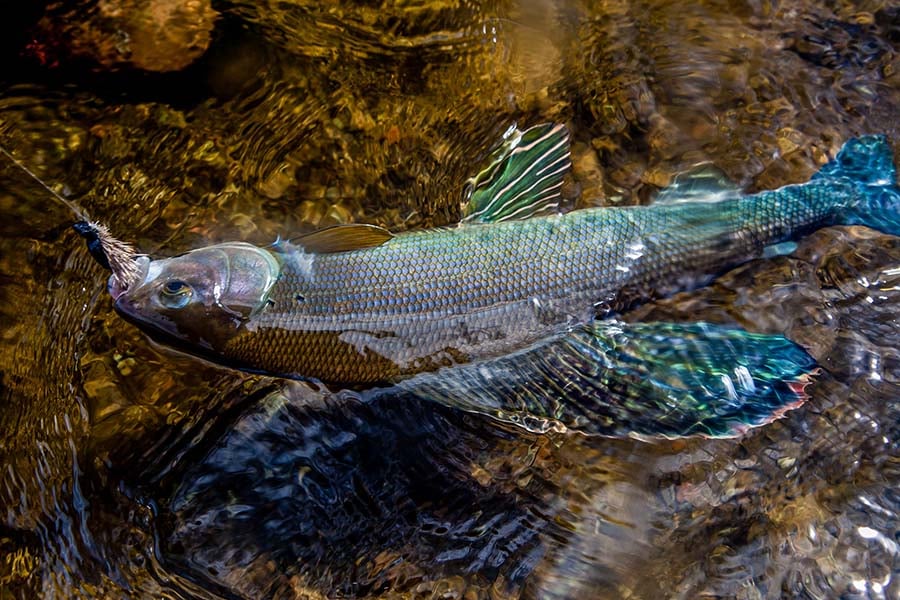

Where To Catch Grayling
The different species of Grayling can be found in many parts of the world and are native to the United Kingdom, northern Europe and North America. The Arctic Grayling is widespread throughout the Arctic and Pacific drainages in Canada, Alaska, and Siberia, as well as the upper Missouri River drainage in Montana. In Europe, they used to be persecuted by anglers for the false perception that they stopped Trout from colonizing stretches of rivers and streams. However, research has shown that they feed on different prey items and generally prefer different microhabitats within the waterways.
All species primarily prefer cold water, and although they get found in lakes, they prefer well-oxygenated, fast-flowing rivers with clean sandy- or gravel bottoms. However, it’s worth bearing in mind when fishing for Grayling that their small liver makes them highly susceptible to pollution.
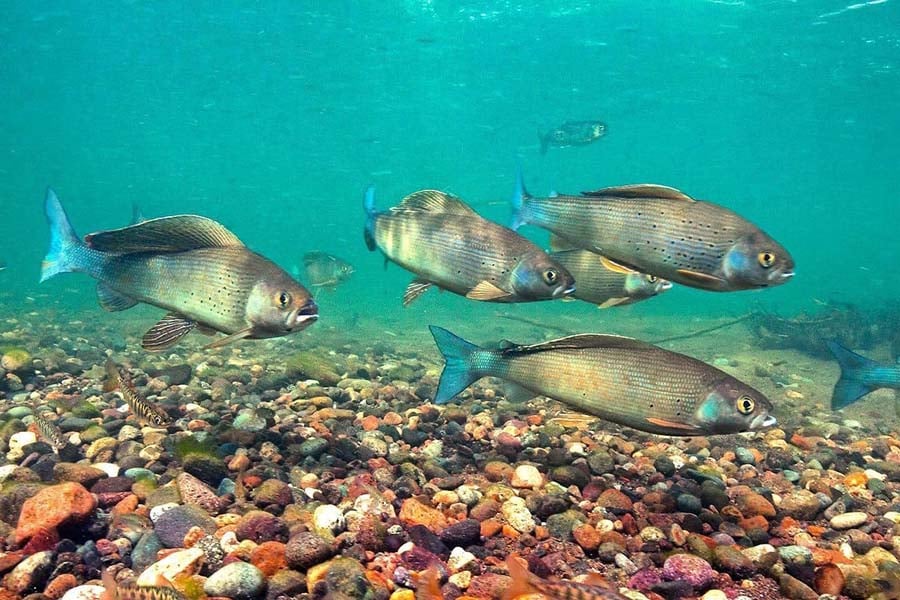

Average Size Of Grayling
None of the Grayling family grows particularly big, and the average size is around 1lb to 2lb, with a 3lb fish considered a specimen. The biggest of all the family is Arctic Grayling, and the record for this species is 8.4lb (3.8kg), landed from an unknown river in Canada.
How To Catch Grayling
The Grayling are generally omnivorous, feeding primarily on vegetable matter, crustaceans, insects, and zooplankton and can get caught on many different methods. In the United Kingdom, coarse anglers target them on the float using bait; however, in most parts of the world and by the majority of anglers, they are targeted on the fly, providing some thrilling sport.


Grayling often glide up from considerable depths to intercept food, so a floating fly presented neatly on the surface of the water is one of the most exciting and rewarding ways to catch them. Well-known Grayling flies include the Grayling Witch, Klinkhamers, various nymphs and ‘Red Tags’, and other Trout patterns. Flies tied to resemble pink shrimps have also been used to significant effect.
A method known as ‘Czech-nymphing’ is also a popular and effective way to catch them, especially when they’ve shoaled up in the colder months. This method involves moving a series of nymphs under your rod tip, using the river’s current to entice the fish to feed. Wading to deeper water will often provide the best results, and in general, as Grayling are less spooky and cautious than Trout, they’re not as quickly put off by human presence.
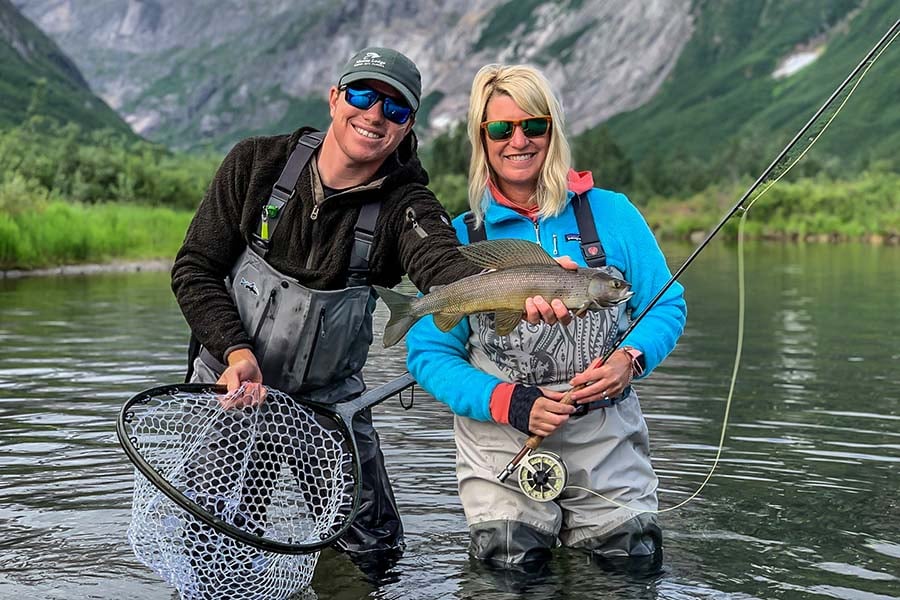

Contact US
If you’ve always wanted to catch a Grayling on the fly, we have a range of destinations around the world where we can make this happen. Our freshwater fly fishing lodges in Alaska are considered some of the best in the world, with some incredible fishing opportunities. If you’d like to learn more or enquire about a trip, contact Peter Collingsworth on 01603 407596 or via email at peter@sportquestholidays.com.
